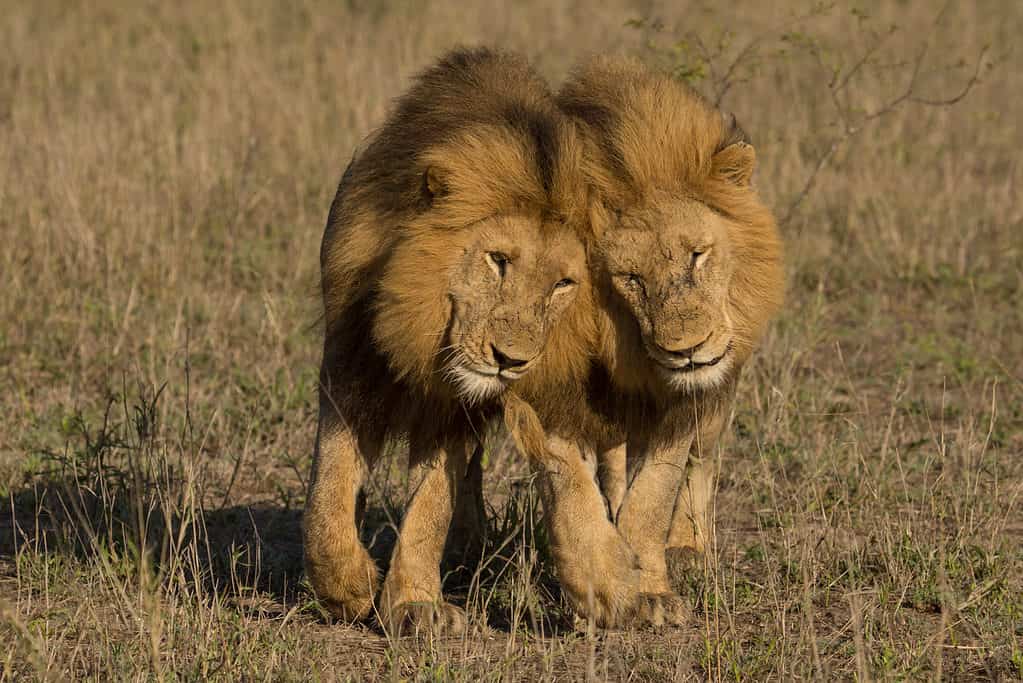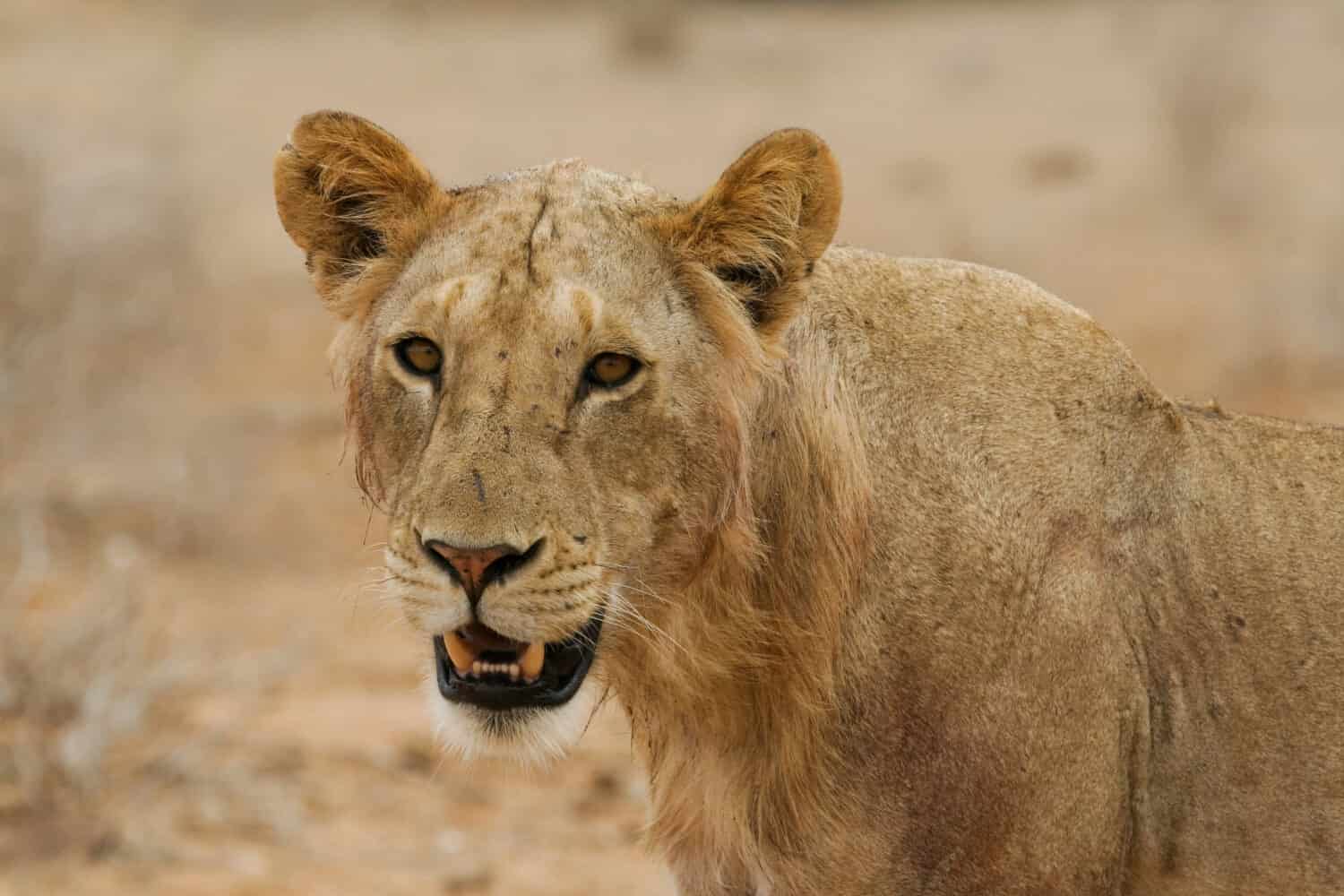Lions are a famous example of a sexually dimorphic species. In such species, males and females are typically easily distinguished by physical appearance. These traits can include differences in size, color, shape, ornamentation, and so on. In the case of lions, adult males are not only larger but also usually sport a prominent mane. What is the reason and purpose of a lion’s mane, however? And is it true that all males have one and all females do not? Read on to find out why lions have manes.
Development of the Lion’s Mane

You can usually tell adult male and female lions apart by the male’s larger size and prominent mane.
Males typically start growing a mane during adolescence, spurred on by increasing testosterone levels. This hair grows to cover the head, neck, shoulders, chest, and sometimes even down the belly. The mane is typically fully formed by around the age of 4.5 years, with length, thickness, and color varying considerably amongst individual lions. A combination of genetic, social, and ecological factors influence this variation, as described below.
The Mane as a Signal of Fitness

One reason and purpose of a lion’s mane is to signal to fellow males relative strength.
A 2002 study found that both the length and color of the lion’s mane function as signals of fitness that influence relationships in this most social of cat species. Mane length primarily influences male-male interactions, with longer manes seen as a signal of fighting prowess. Mane color, meanwhile, primarily influences male-female interactions, with darker manes seen as a signal of reproductive success. In other words, males are more wary of longer-maned males, and females are more attracted to darker-maned males!
Temperature and Mane Growth

Lions in cooler regions often grow longer, thicker manes, which can even grow down onto the belly.
However, the 2002 study also reported that ambient temperature in the lion’s habitat can also influence mane fullness and color. Longer, darker manes may have signal advantages, but they also have physical disadvantages in hotter temperatures. Such manes make lions more prone to heat stress, consequences of which also include abnormal sperm production and lower food intake. Lions in the hottest of habitats, therefore, tend towards shorter, lighter manes. On the other hand, as further investigated in a 2006 study, lions living in colder temperatures may regularly grow longer, thicker manes because of the insulation advantages. This includes both wild lions who naturally live in cooler climates such as mountains and captive lions who are kept in zoos in cooler regions of North America and Europe.
Do All Male Lions Have Manes?

One of Tsavo’s famed “maneless” lions, although such individuals often have at least a sparse bit of hair growth in the mane area, as seen here.
As noted above, manes are a well-known trait of male lions in what is officially classified as a dimorphic species. However, as is often the case in nature, things aren’t always so cut and dry. For example, in some areas, there are populations of so-called “maneless” male lions. Such lions exhibit notably weak or even absent mane growth. In some cases, a consistently hot climate may be a factor, such as for Tsavo’s famous maneless lions. However, in other cases, the cause of manelessness isn’t as clear. One theory suggests it may be an adaptation to hunting in thorny vegetation. Variations in testosterone could also be at play, as could other genetic and/or environmental factors.
Can Female Lions Grow Manes?
Similarly, scientists have documented cases of females growing manes. This growth has been linked to increased testosterone production, with some lionesses concurrently exhibiting masculine behaviors such as mounting. However, as with their maneless male counterparts, more research needs to be done on what genetic and/or environmental causes could cause lionesses to grow manes.




